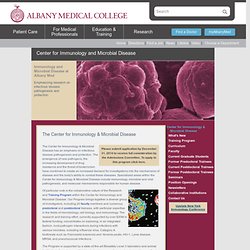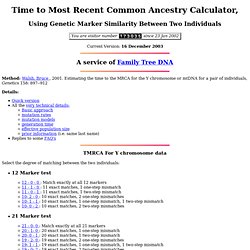

Decontamination of warfare agents ... BD Biosciences - Home. Millipore - Biomanufacturing and Life Science Research. Santa Cruz Biotechnology, Inc. Antibodies - World Leader in Antibody and siRNA Products. FAQs for T4 DNA Ligase, Ligases, NEB. Free Download PDF. BCM Search Launcher: Sequence Utilities. SFX – Sci-fi News, Reviews and Features. Analysis of Disulfide Bond Formation. Wiley Online Library: Book Article. Walden University M.S. in Psychology Crisis Management and Response. Degree Programs. Inc. - Login. SF424 (R&R) Application and Electronic Submission Information for NIH.
This page provides application guides for preparing electronic grant applications using the SF424 (R&R) application forms.

Free Adobe Reader software is required. For minimum system requirements and download instructions, go to See the Electronic Submission of Grant Applications page for more information on the NIH electronic submission process. ASGCT - American Society of Gene & Cell Therapy. BACTIBASE Database.
Webmail - Login. Software. Catalogs. Secador® Mini Desiccator Cabinet - Krackeler Scientific Inc. The 0.35 cu ft volume cabinet is perfect for small humidity sensitive products or materials that are always needed near a work area.

Cabinet is molded of clear polystyrene and door is molded of clear co-polyester for easy viewing of contents. A positive latch on the door provides an excellent seal and two locking loops permit the use of a padlock or tamper evident seal to maintain security. A dial hygrometer in the door allows easy monitoring of relative humidity. Stem Cells: Therapy, Facts, Breakthroughs, Ethics and News. Chemguide: helping you to understand Chemistry - Main Menu. Centers for Disease Control and Prevention. MyCalcTool.
Biotechnology Industry Organization. Albany Medical College: The Center for Immunology & Microbial Disease. The Center for Immunology & Microbial Disease has an emphasis on infectious disease pathogenesis and protection.

The emergence of new pathogens, the increasing development of drug resistance and the threat of bioterrorism have combined to create an increased demand for investigations into the mechanisms of disease and the body's ability to combat these diseases. Specialized areas within the Center for Immunology & Microbial Disease include immunology, microbial and viral pathogenesis, and molecular mechanisms responsible for human disease. Of particular note is the collaborative nature of the Research and Training Program within the Center for Immunology and Microbial Disease. Our Program brings together a diverse group of investigators, including 20 faculty members and numerous predoctoral and postdoctoral trainees, with particular expertise in the fields of microbiology, cell biology, and immunology. 2013 Annual Research Retreat.
FutureMe.org: letters to the future. Calculation of Time to Most Recent Common Ancestry (TMRCA) Using Genetic Marker Similarity Between Two Individuals Current Version: 16 December 2003 A service of Family Tree DNA Method: Walsh, Bruce , 2001.

Brookhaven National Laboratory - A Passion for Discovery. Basic cell culture protocols. FactCheck.org. AG 105 Tuschl: siRNA. Conversion: weight - moles (for proteins) Creepy Gmail. Cell Size and Scale. Some cells are visible to the unaided eye The smallest objects that the unaided human eye can see are about 0.1 mm long.

That means that under the right conditions, you might be able to see an ameoba proteus, a human egg, and a paramecium without using magnification. A magnifying glass can help you to see them more clearly, but they will still look tiny. Smaller cells are easily visible under a light microscope. It's even possible to make out structures within the cell, such as the nucleus, mitochondria and chloroplasts.
To see anything smaller than 500 nm, you will need an electron microscope. Adenine The label on the nucleotide is not quite accurate. Bacillus anthracis Sterne Genome Page. Anthrax. Like many other members of the genus Bacillus, Bacillus anthracis can form dormant endospores (often referred to as "spores" for short, but not to be confused with fungal spores) that are able to survive in harsh conditions for decades or even centuries.[1] Such spores can be found on all continents, even Antarctica.[2] When spores are inhaled, ingested, or come into contact with a skin lesion on a host, they may become reactivated and multiply rapidly.

Anthrax commonly infects wild and domesticated herbivorous mammals that ingest or inhale the spores while grazing. Ingestion is thought to be the most common route by which herbivores contract anthrax. Carnivores living in the same environment may become infected by consuming infected animals. Diseased animals can spread anthrax to humans, either by direct contact (e.g., inoculation of infected blood to broken skin) or by consumption of a diseased animal's flesh. Bacillus anthracis bacterial spores are soil-borne. Signs and symptoms[edit] Bacteria Stock Photos, Bacteria Stock Photography, Bacteria Stock Images. ATCC 4342 Strain Passport - StrainInfo. Anthrax (Bacillus anthracis) Bacillus cereus. Anthrax Sterne, General Information - NCZVED. Frequently Asked Questions What is the Sterne strain (34F2) of Bacillus anthracis?

Bacillus anthracis is a spore-forming bacterium that causes anthrax in humans and animals. B. anthracis has 3 main virulence factors coded on 2 plasmids, pXO1 and pXO2. If one of these two plasmids is missing, the organism cannot produce all of its virulence factors. The resulting organism is attenuated, meaning its virulence and the ability to cause illness in people or animals have been reduced. The Sterne strain, discovered in the 1930s, has naturally lost its pXO2 plasmid, and consequently its ability to produce a capsule. Genetic Origins. 12th CROI. Elsevier: Home. APRA Porter Novelli.